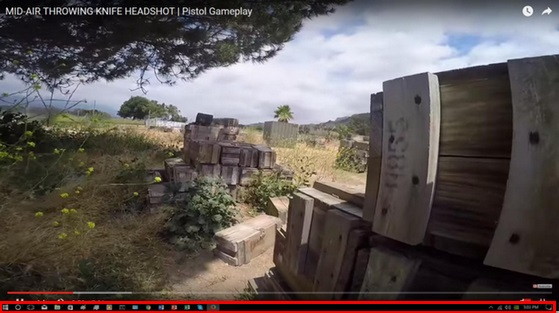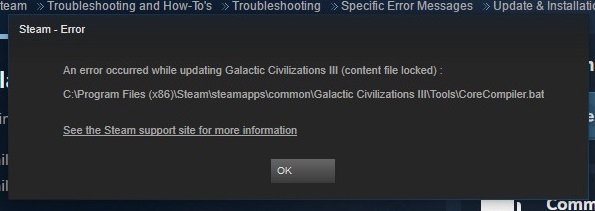Windows operating systems have evolved over the years to provide users with a seamless and efficient computing experience. However, no system is without its quirks and occasional errors.
One such issue that Windows users may encounter is the “Taskbar Showing in Full Screen” error. This error can be both frustrating and disruptive, especially when it interferes with your ability to work or enjoy multimedia content in full-screen mode.
In this comprehensive guide, we will delve into the meaning of the “Taskbar Showing in Full Screen” error, its significance, what causes it, and effective solutions to help you resolve this issue and ensure a smooth, full-screen experience on your Windows system.

Contents
Understanding the Taskbar Showing in Full Screen Error
Before we explore the details, let’s break down the error itself:
- The “Taskbar” refers to the horizontal bar at the bottom of the Windows desktop that contains the Start button, open application icons, and system tray.
- “Showing in Full Screen” indicates that the error occurs when the taskbar remains visible while you’re using an application or watching multimedia content in full-screen mode.
In essence, the “Taskbar Showing in Full Screen” error occurs when the Windows taskbar fails to hide itself automatically as it should when you’re using an application in full-screen mode.
Related Guides:-
- api-ms-win-crt-runtime-l1-1-0.dll System File Missing Error
- Reboot and Select Proper Boot Device Error in Windows 10
- How to Fix Err_Cache_Miss Error on Google Chrome
This can be particularly frustrating when watching videos or playing games, as it obstructs the view and disrupts the immersive experience.
Common Symptoms of the Error
When you encounter the “Taskbar Showing in Full Screen” error, you may experience the following symptoms:
- Persistent Taskbar: The primary symptom is the taskbar remaining visible and not auto-hiding when an application or video is in full-screen mode.
- Reduced Screen Real Estate: The visible taskbar reduces the available screen space for your application or content, impacting your viewing or gaming experience.
Now that we understand the symptoms, let’s explore the potential causes of the “Taskbar Showing in Full Screen” error.
Possible Causes of the Error
To effectively troubleshoot and resolve this error, it’s crucial to identify its underlying causes. Here are some common reasons behind the “Taskbar Showing in Full Screen” error in Windows:
- Taskbar Settings: Incorrect or misconfigured taskbar settings can prevent it from auto-hiding in full-screen mode.
- Software Conflicts: Certain third-party software or background processes may interfere with the taskbar’s ability to auto-hide.
- Corrupted System Files: Corrupted or missing system files can lead to unexpected behavior, including the taskbar not auto-hiding in full-screen mode.
- Driver Issues: Outdated or incompatible graphics drivers can sometimes cause display-related issues, including problems with the taskbar behavior.
Now that we’ve identified the potential causes, let’s explore the solutions to fix the “Taskbar Showing in Full Screen” error:
How to Solve Taskbar Showing in Full Screen Error
Well, there is no need to be stressed about there are a few methods through which you can fix Taskbar Showing in Fullscreen issue. In this article, you will find all the conventional methods that you can apply to get rid of the taskbar won’t hide the issue.
Method 1 – Restarting Explorer.exe
Explorer.exe is a GUI app, also known as File Explorer. It is a file managing application that was included in the Microsoft operating system Windows to help users to access their file system.
Many users claimed that their issue of taskbar showing in full-screen mode was resolved when they restarted their file explore as it is the main medium of navigation in your Windows machine, therefore, there is a possibility that your issue will be resolved after restarting your file explorer.
To implement the method, follow the steps mentioned below.
Step 1 – Firstly, press Windows key + R, this will open the Run Application.
Step 2 – Now in the dialog box type ‘taskmgr’ to open your systems task manager.
Step 3 – Next, click on the tab named Processes situated on top of the window.
Step 4 – Now, search for the task of Windows Explorer in the list of Processes. Click on it and then press the ‘Restart’ button you will find at the bottom left side of the Window.
Read Also:
Method 2 – Overriding high DPI Scaling Behaviour in Chrome
If the method mentioned above did not work for you, then you can try overriding high DPI scaling behavior in Chrome. This solution might fix your issue. Follow the steps mentioned below for implementation.
Step 1 – First, right-click on the Google Chrome icon present on your taskbar, then again right-click on Google Chrome mentioned in the list and at last select Properties.
Step 2 – Now, in properties, go to the Compatibility tab that you can find at the top of the screen.
Step 3 – Further, in the settings tab, select the line that says ‘override high DPI scaling behavior.’
Step 4 – Later, click on Apply to save changes and the exit from the Window.
Step 5 – Finally, restart your Google Chrome to check the issue has been resolved or not.
Method 3 – Turning Visual Effects Off
If the solutions mentioned above were unable to solve your problem, then there might be a possibility that this issue still persists due to your Windows.
Window’s visual effects are generally known to mess with other applications. So you can try turning off your Windows visual effects and see if it changes anything.
Step 1 – Firstly, press Windows key + R, this will open the Run Application.
Step 2 – Now in the dialog box type ‘Control Panel’ to open your systems Control Panel.
Step 3 – Now, in Control Panel, go to System and Security.
Step 4 – Next, go to the sub-heading System, and after it opens, click on the Advanced System Settings.
Step 5 – Further, a new window will pop up. In that window, go to the advanced tab and click on settings of the Performance category.
Step 6 – At last, click on the checkbox in front of ‘Adjust for Best performance‘ then save and exit.
It will probably solve your current problem.
Other Solutions:-
- CompatTelRunner.exe High CPU and Disk Usage
- Windows Error Code 0x80070570
- Error 0x800705b4 in Windows Update and Windows Defender
- System Service Exception (0x0000003b) Error



